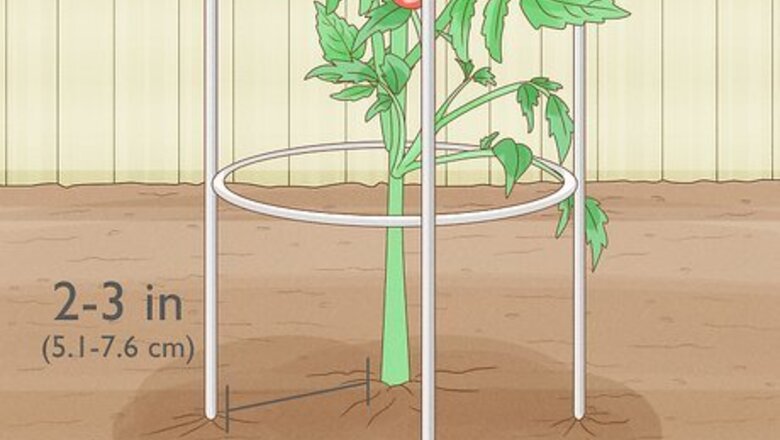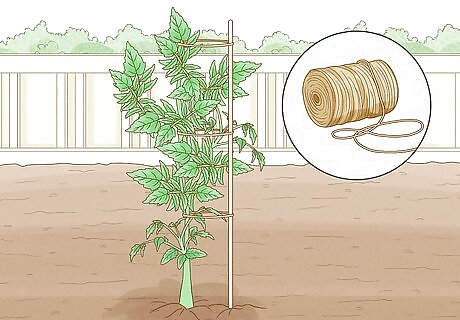
views

Strike the stake about 2 to 3 inches (5.1 to 7.6 cm) away from the plant's stem into the ground by using a hammer or mallet. Place the stake at an angle to offer additional support to the plant.

Secure the stake to the plant with non-wired plant ties, nylon stockings, or strong wool. You should use a figure-8 loop to allow the plant to move without scratching or rubbing the stem. You can use the same method for more than 1 stake.

Check on your plants regularly, and apply additional ties when the plans grow. Add the ties about 6 to 8 inches (15.2 to 20.3 cm) apart. Make sure you secure the tie to the stake and not the plant in order to allow the plant to grow without restriction. All of the branches may be gathered at a single stake near the plant's center to provide additional support.

Determine the size and amounts of plant stake you need. If you have a fast-growing plant, you may need to re-stake them every few months. Consider how large the plant will be in a year, and stake accordingly. The stake should be about 12 inches (30.5 cm) higher than the plant. Additionally, if your plant is in an area that doesn't suffer from strong winds, you may be able to use 1 to 2 stakes. For gustier winds, plan for at least 3 stakes. If you're using wooden stakes, make sure the wood is left untreated. Stains or paints on the wood may contain chemicals that can leach into the soil. Reusable garden stakes are a long-lasting option and fold easily for winter storage. Ideal for vegetable plants, these stakes might come in L shapes and hook closely together to make whatever size you desire.
















Comments
0 comment